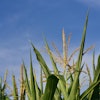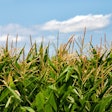
The U.S. Department of Agriculture's Foreign Agricultural Service has released its February 2025 reports on global grain and oilseed markets, highlighting significant shifts in China's agricultural import patterns. These reports underscore the complex interplay between domestic economic factors and global market conditions affecting China's agricultural sector.
In the grain market, China's corn imports for the 2024/25 marketing year are projected to fall dramatically to 10.0 million tons, less than half of the 23.4 million tons imported in 2023/24. This decline is primarily attributed to weakening domestic demand and policy interventions aimed at supporting falling corn prices.
Conversely, China's rice imports are showing signs of recovery, with the USDA revising its 2025 forecast upward by 200,000 tons to 2.2 million tons, driven by declining global rice prices.
The oilseed market presents a more nuanced picture. China remains the primary destination for exported soybeans, accounting for over 60 percent of global imports in recent years. The country's massive crushing industry utilizes these imports to produce soybean meal for the world's largest swine herd and one of the largest poultry flocks.
Key developments in China's oilseed market include:
A slight shift towards mid-protein meals: From 2013/14-2017/18, meal from imported soybeans averaged 93 percent of total imported soy meal equivalent (SME). This figure decreased to 87 percent in 2023/24, as imports of other protein meals more than doubled.
Diversification of protein sources: China has increased imports of sunflowerseed meal, primarily from Ukraine and Russia, and rapeseed meal, mainly from Canada.
Changing supplier dynamics: Brazil's share of China's soybean imports rose from 62 percent in 2017/18 to 71 percent in 2023/24, while the U.S. share declined from 30 percent to 22 percent.
Price differentials: In 2023/24, Chinese importers paid an average of 13 percent more for U.S. soybeans than Brazilian soybeans, compared to just a 2 percent difference from 2013/14-2017/18.
Despite efforts to diversify its protein sources, China's overall reliance on imported soybeans continues to grow. The moderate shift towards rapeseed and sunflowerseed meal has not significantly reduced the country's increasing dependence on Brazilian soybeans, while imports of U.S. soybeans continue to decline.
These trends reflect China's ongoing efforts to ensure food security and manage its agricultural supply chains amidst changing global market dynamics. As the world's largest agricultural importer, China's evolving import strategies have significant implications for global trade patterns and prices across grain, oilseed, and protein meal markets.

















